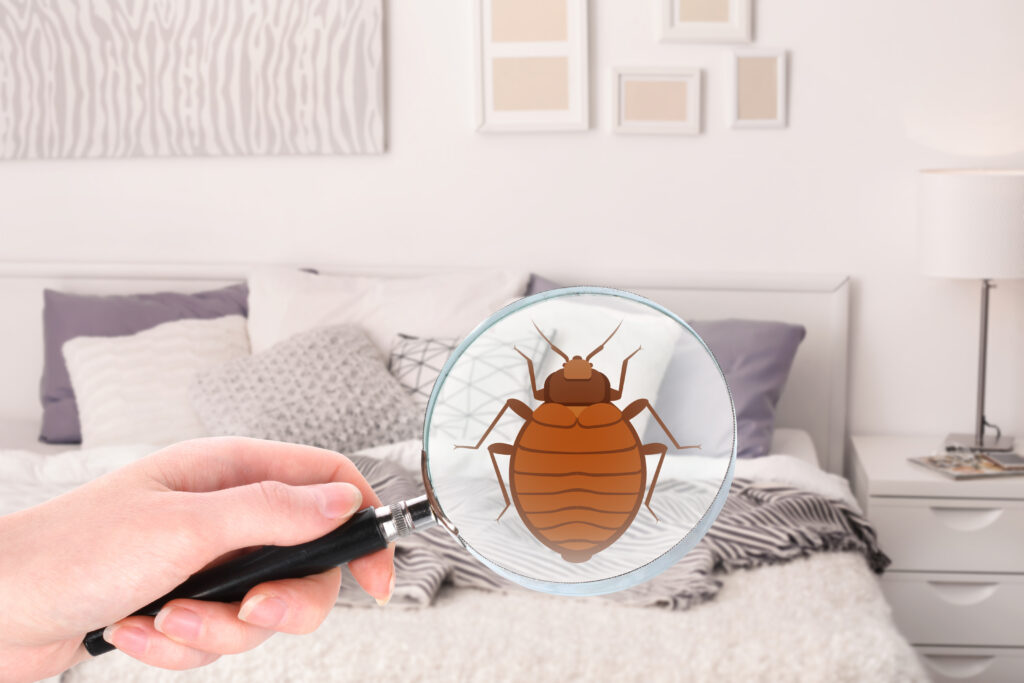Reliable A1 Bed Bug Treatment Houston - Do Away With Bed Vermin
Understanding the Lifecycle of Bugs for Targeted Control Methods
Understanding the lifecycle of insects is an essential aspect of reliable parasite monitoring methods. By understanding the numerous phases of advancement that pests undertake, a much more accurate and targeted approach can be embraced to manage their populations. This understanding not just loses light on the susceptabilities within the bug lifecycle however likewise leads the way for implementing strategic measures that can interrupt their development and reproduction cycles. Through a much deeper understanding of just how bugs thrive and evolve, customized control strategies can be made to resolve details points in their lifecycle, ultimately causing even more effective insect administration end results.
Significance of Recognizing Parasite Lifecycle
Recognizing the lifecycle of bugs is vital for creating effective and targeted control methods in pest administration. By understanding the different phases a pest undergoes from egg to adult, bug control professionals can determine vulnerable factors in the lifecycle where intervention can be most successful. Recognizing when larvae are most active can help figure out the optimum timing for using larvicides. Additionally, comprehending the lifespan of a parasite species can aid in anticipating populace development patterns and possible problem threats.
Moreover, acknowledging the details environmental problems needed for each stage of the pest's lifecycle can guide choices on habitat alteration or exclusion approaches to decrease and interrupt the lifecycle pest populaces. This expertise enables pest administration professionals to carry out aggressive measures instead of depending exclusively on responsive therapies, causing more lasting and lasting bug control options. Eventually, a detailed understanding of parasite lifecycles encourages parasite control experts to customize their methods properly, taking full advantage of and reducing ecological effects control results.
Key Stages in Bug Advancement
To efficiently execute targeted control approaches in insect administration, an essential element exists in thoroughly determining and comprehending the crucial stages in insect advancement. Insect development generally consists of several vital phases that are critical for their lifecycle and monitoring.

Vulnerabilities in Pest Lifecycle
Throughout the numerous phases of a bug's lifecycle, unique vulnerabilities emerge that can be strategically targeted for reliable control actions (A1 Bed bug Exterminator houston). One crucial vulnerability exists in the egg phase, where bugs are commonly a lot more prone to specific insecticides or organic control representatives due to their soft outer shell, making them easier targets for intervention. Comprehending these susceptabilities in the insect lifecycle is vital for establishing exact and effective control approaches that efficiently handle bug populaces while minimizing ecological influence.
Implementing Targeted Control Actions

Applying targeted control procedures normally includes a multi-faceted method. This may consist of habitat alteration to make the setting much less welcoming to insects, such as removing standing water for mosquito control or securing entrance points for rats. In addition, organic control techniques can be utilized, where all-natural predators or virus are presented to keep pest populations in check.
Integrated Insect Monitoring (IPM) strategies that integrate different control steps in a collaborated and sustainable manner are frequently the most effective in achieving lasting parasite administration goals. By executing targeted control steps based on an extensive understanding of insect lifecycles, pest populaces can be properly managed while reducing dangers to human wellness and the environment.
Improved Bug Monitoring Practices

Furthermore, the unification of biological control representatives, see post such as natural predators or microorganisms of pests, can help in reducing dependence on chemical pesticides and promote an extra balanced ecological community. Carrying out physical barriers and catches can also belong to enhanced parasite management methods, using non-toxic and targeted remedies for insect control. In addition, using scents and other semiochemicals can interfere with pest breeding patterns and communication, causing reduced parasite populations in time.
Verdict
Finally, comprehending the try these out lifecycle of pests is vital for reliable pest administration methods. By identifying key phases in pest advancement and vulnerabilities in their lifecycle, targeted control actions can be implemented to reduce bug populaces. Enhanced insect administration techniques can help in reducing the dependence on broad-spectrum chemicals and promote more environmentally friendly and lasting parasite control approaches. This knowledge plays a vital role in preserving healthy ecosystems and farming productivity.
Comprehending the lifecycle of insects is important for establishing efficient and targeted control strategies in pest monitoring. By understanding the different stages a pest goes via from egg to adult, parasite control specialists can identify at risk factors in the lifecycle where treatment can be most successful. Ultimately, a thorough understanding of parasite lifecycles equips pest control experts to customize their methods effectively, optimizing and minimizing environmental influences control outcomes.
By carrying out targeted control actions based on an extensive understanding of parasite lifecycles, insect populaces can be properly controlled while lessening threats to human health and the atmosphere.
By recognizing key stages in bug growth and vulnerabilities in their lifecycle, targeted control steps can be implemented to minimize parasite populations.